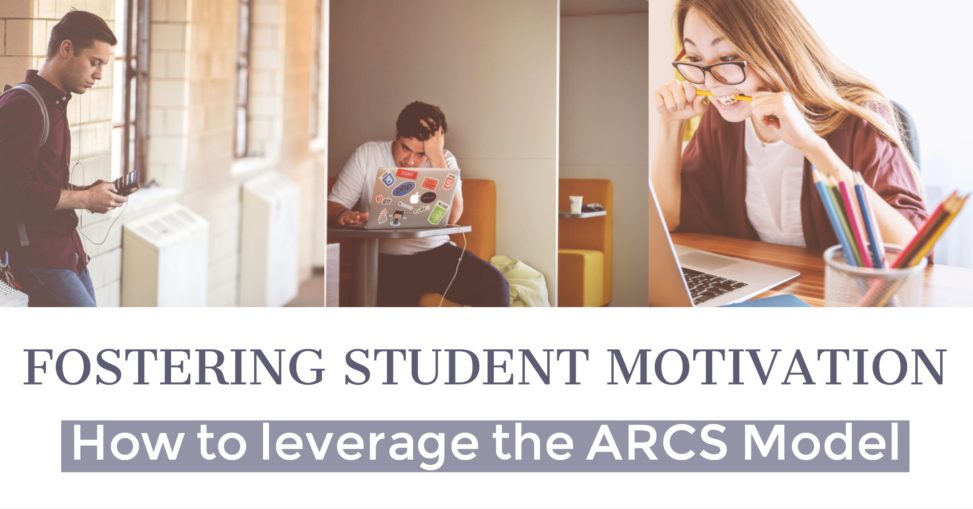Student motivation is essential to effective instruction. Unmotivated learners will tune out and shut down. Motivation can come from a variety of sources intrinsic motivation can come from curiosity, a sense of achievement, self-efficacy, and confidence. Extrinsically motivation can come from the offer of reward or fear of punishment from an authority. There are ways to influence motivation using the ARCS model of student motivation
John Keller (1987) developed the ARCS model of student motivation. The acronym stands for Attention, Relevance, Confidence, and Satisfaction. Essentially your learners will need to answer these three questions positively or they will lose attention and motivation to complete the lesson. “Is this material relevant to my needs and interests?” “Am I confident that I can do this?” “Will/Did this satisfy my needs and interests?” When instructional designers are able to maximize student motivation they, as a result, maximize student effort. The final performance is also influenced by the individual abilities of the student but maximizing effort goes a long way on maximizing the gains of instruction.
Attention: The best method for capturing and holding attention will be unique to the learners and the context. Some learners may be sufficiently curious to already be attentive but other techniques can include varying the presentation of materials, using concrete examples, and using novelty and surprise in the lesson.
Relevance: The second component of the ARCS model is ensuring the students have a solid understanding of the relevance of the material. How will the material benefit them personally? The easiest way of convincing the learners of the relevance is to tell them the learning objectives. For different learners, this simple statement may not be enough and extra effort may need to be applied in order to make the relevance of the learning to the student more apparent. This can be done by making the new task familiar by connecting it to previous knowledge so the learner is able to make a connection to something they already know. Describing the present worth of the learning objectives and connecting it areas of value for the individual students so the students will see the practical applications the learning. Instructional designers can also inform the learners about the future value of the learning objectives such as how the learning objectives align with career or life goals of the learner.
Confidence: In order to have the motivation to participate in a task learners will need confidence that they will be able to successfully perform the task. There are a few things that instructional designers can do to maximize the confidence of the learners. They can communicate clear learning objectives and avoid being overly vague. Instructional designers should also be careful when sequencing the learning activities so that easier tasks are performed first which can help the confidence of the learners grow. Finally providing opportunities for learner control can help boost confidence that the learners will be able to successfully complete the learning objectives.
Satisfaction: Satisfaction throughout the learning experience is most easily achieved through the effective use of feedback to the learner. Care should be given that feedback is given on the performance and not on the person and that the feedback is timely and consistent. Some feedback is self-evident such as when teaching items with objective answers. This type of feedback can and should be as automated and immediate as possible.
Practical Application: The ARCS model of student motivation has very tangible and practical applications. The model offers us an opportunity to reflect on how we are addressing the question of student motivation as we develop instruction. Many of the recommendations overlap such as having clear and clearly communicated learning objectives that tie neatly into the learner’s experience and demonstrate relevance. Reviewing the ARCS model early in the design phase of an instructional design project gives the instructional designer an opportunity to ask how their students will answer the questions “Is this material relevant to my needs and interests?” “Am I confident that I can do this?” “Will/Did this satisfy my needs and interests?” to maximize student attention and motivation throughout the learning experience which in turn helps in the design of the best possible learning experience.

Leave a Reply